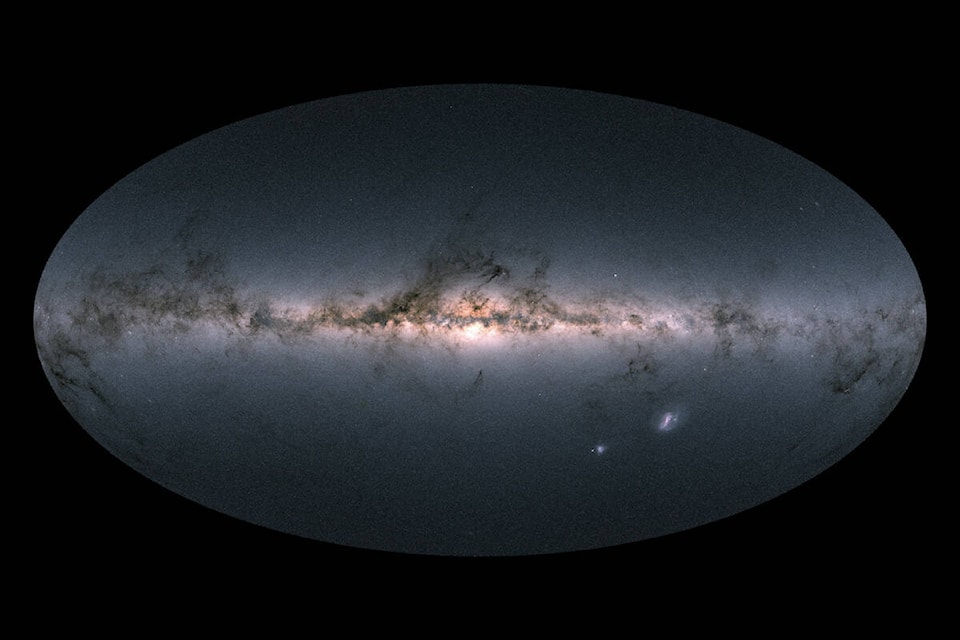While Earth’s hydrogen-burning sun currently powers its luminosity with nuclear fusion, at some point – like all celestial sparks that dot the skies – it will run out of fuel and eventually turn into a white dwarf star.
You can think of a star like a campfire because just like a flame’s embers, its light becomes fainter as it cools over time, University of Victoria astronomer Simon Blouin said in an interview.
White dwarf stars slowly freeze into a solid after a multi-billion year cooling process, which has led to them long being considered “dead stars.”

But a new study co-authored by Blouin in the scientific journal ‘Nature’ revealed a population of white dwarfs that stopped cooling for more than eight billion years.
Their findings stem from a 2019 discovery that some white dwarfs don’t cool down as expected, which called the “dead star” consensus into question. Going back to the campfire analogy, it would be like leaving the campfire and returning a year later to find the embers are still hot, Blouin said.
“So there are those white dwarfs that stay at the same brightness, same temperature for many billions of years,” he said, adding scientists were puzzled about what was still powering the stars’ luminosity as they had no fuel left to burn.
Typical white dwarfs cool to a point where they form crystals, causing them to become increasingly solid as they freeze from the inside out.
In the group of outlier white dwarfs studied by Blouin and his co-authors, heavier elements were dispelled inside the star as the crystals formed. That caused the crystals to become lighter and float to the white dwarf’s liquid surface – like ice cubes rushing to the top of a glass of water.
“That means you cannot simply freeze the star from the inside out because the crystals formed at the centre don’t stay there, they’re buoyant,” Blouin said. That movement of crystals rising as liquid rushes down toward the core creates energy that then powers the star and keeps it luminous.
Aside from the study challenging the standard definition of white dwarfs being dead, it also has implications for “galactic archaeology.”
White dwarfs have been helpful age indicators of the Milky Way Galaxy as scientists have been able to say: the cooler the star, the older it is.
Dating groups of stars by measuring the temperatures of white dwarfs has helped astronomers as they ultimately try to reconstruct the galaxy’s formation. The study showing some white dwarfs stay at constant temperatures for billions of years makes it trickier to use them as age indicators. It will also affect some previous findings that likely underestimated the ages of some stars.
While there are still unknowns, the researchers suspect the newly discovered behaviour is spurred by a white dwarf colliding with another star, which causes them to merge into a bigger celestial body.
“You have these thermonuclear reactions going on that can change the composition of the star and we think that’s why those stars are behaving differently,” Blouin said.
Over 97 per cent of the Milky Way will eventually become white dwarfs, but it’s still an open question whether the collision of two white dwarfs could lead to the cooling-pause phenomenon.
The researchers were able to detect the outliers thanks to the European Space Agency’s Gaia satellite, which multiplied the number of known white dwarfs by a factor of ten and therefore gave scientists much more data.
Identifying white dwarfs that were defying the scientific consensus was thanks to a temperature “traffic jam” as Blouin puts it. By looking at stars on a scale of hot to cold, the study’s researchers saw a cluster being jammed up in a middle section as they were cooling at a slower rate.
Compared to the eight-billion year cooling pause of the outliers, models show normal white dwarfs also go through around a one-billion year pause. The researchers are now trying to learn more about star ages as they believe the cooling phenomenon they discovered means most white dwarfs could around one billion years older.
READ: Fish toss aims to restore nutrients in salmon-bearing Saanich creek



